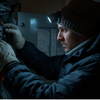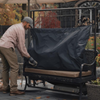How to Make Your Hot Tub More Energy Efficient
- by Lalaine Garcia
For the majority of homeowners, a hot tub is the ultimate luxury—a welcoming retreat to melt away stress and soak in tranquility. However, such bliss comes at a steep price in the form of high energy costs to keep hundreds of gallons of water continuously heated. With rising utility rates, this expense can quickly add up and lead to sticker shock on monthly bills.
Luckily, with just a few simple tricks, you can slash what your hot tub gulps down in electricity without losing out on any of that sweet, sweet relaxation. With some strategic tweaks to settings and maintenance habits, you can optimize the efficiency and affordability of using your hot tub.
Now, let's start exploring some practical ways to make your hot tub more efficient, so you can still enjoy the tranquility of relaxation without worrying about high energy costs!
Use an Insulating Cover
The #1 way to boost efficiency is using a well-fitted, insulating cover whenever the hot tub is not in use. This provides a vital layer of insulation that prevents heat from escaping through the surface. Look for covers with a tapered foam core of at least 2-3 inches thick.
The tapered shape prevents water pooling. Vinyl covers also retain heat better than canvas. Maintain the cover properly by treating it with conditioning spray and avoiding dragging it on the ground when removing it.
Set an Economical Temperature
High hot tub water temperatures have a major impact on energy use. Every degree you raise the temperature increases energy consumption significantly. The ideal temperature for energy savings is 95-100°F – high enough for comfort and hydrotherapy benefits but not excessively hot.
Avoid cranking the thermostat up to the maximum of 104°F unless absolutely needed. And be sure to lower the temp when going on vacation or not using the tub for a while.
Unplug Peripheral Devices
Many tubs come with fancy extras like lights, waterfalls, and entertainment systems that consume additional power. Save electricity by unplugging these peripherals when not in use or setting them on timers too. Every little bit unplugged helps incrementally improve efficiency.
Take Advantage of Off-Peak Rates
If your electric utility offers time-of-use pricing, you can save by only heating the tub during off-peak hours when rates are cheaper. Program your timer accordingly and supplement with occasional daytime reheating as needed. Off-peak heating lets you capitalize on lower rates for the most energy-intensive task.
Use a Timer
Using a programmable timer allows you to heat the tub only during times you expect to use it. No need to maintain full-time heating when you're sleeping or away at work. Invest in an automatic hot tub cover too for convenience lifting the cover on and off.
Just be sure to keep sessions limited during timer-controlled heating so the water doesn’t cool excessively when the system shuts off.
Improve Filtration Efficiency
Clean, unclogged filters allow proper water flow so the pump and heater don’t have to work as hard during filtration cycles. Check and periodically swap out filters to maintain optimal flow. Using filters with a larger surface area or higher micron ratings can also help – just be sure your tub’s pump can handle any added resistance. Keep filters clean by spraying them off with a hose and soaking them in filter cleaner regularly.
Insulate the Plumbing
Covering pipes and plumbing running to and from your hot tub helps minimize heat loss as water circulates. Purchase insulating pipe sleeves and wraps made of foam, fiberglass, or other insulating materials. Make sure any joints and elbows are thoroughly covered. Insulating the pump and heater behind panels also reduces warmth dissipating into the air.
Address Air Leaks
Prevent precious heated air from escaping your hot tub by sealing leaks throughout the shell. Caulk any cracks and gaps in the tub shell itself. Ensure the cabinet panels and access doors seal tightly when closed.
Check where plumbing lines and electrical conduits enter the cabinet for gaps and seal if needed. Keep the insulating cover properly positioned and fitted to limit air loss through the surface.
Reduce Filtration Time
Most tubs filter water automatically multiple times per day. Lowering the frequency and duration of filtration cycles conserves energy while still maintaining clean water. Reduce total daily filtering to around 4-6 hours maximum, only during expected heavy usage times.
Many systems allow easily adjusting filtration schedules via the control panel. Always follow minimum recommendations though.
Monitor Usage
Pay attention to your hot tub occupancy and make adjustments to match usage patterns. No need to maintain full operation if you’re only using the tub a couple of times a week. Lower the temperature, decrease filtration, and avoid unnecessary heating until usage increases.
Conversely, turn everything up if you have an upcoming party or stretch of daily use. Matching settings to reflect actual bather load optimizes efficiency.
Congratulations! Now you know how to make your hot tub more energy efficient without sacrificing comfort and relaxation. Remember, simple habits like setting a timer for your hot tub sessions and adjusting the temperature can make a significant difference in energy consumption. So, go ahead and enjoy your energy-efficient hot tub experience!





